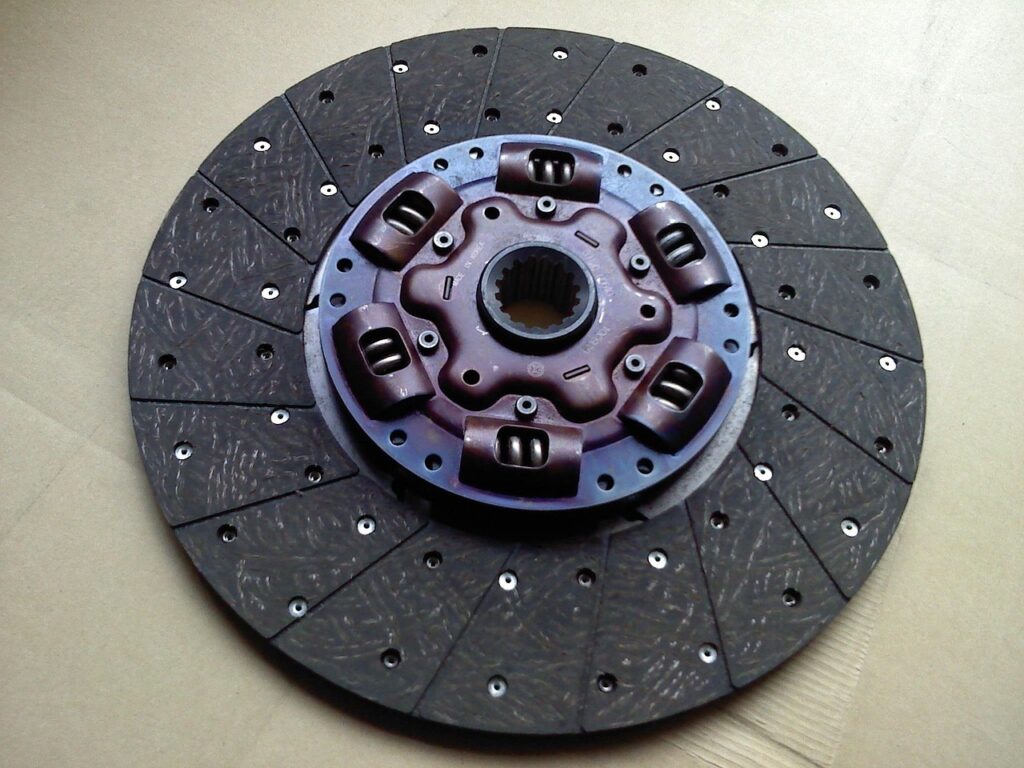For anyone with even a passing fascination for the automotive world, the allure of classic cars is undeniable. Seeing a vintage car out on the road makes you immediately stop and stare, captivated by the classic shape, the chic paint job, and the old-school craftsmanship that modern vehicles often struggle to replicate. These magnificent machines are true showstoppers, embodying eras of unparalleled design, innovation, and pure driving passion. However, beneath their gleaming surfaces and nostalgic charm lies a fascinating micro-economy, where individual components can transcend their functional purpose to become objects of immense desire and extraordinary financial value. It’s a world where a dusty garage can transform into a treasure trove for those with a keen eye and a deep appreciation for automotive history.
This isn’t just about simple replacement parts; we’re talking about relics from bygone eras that are, in many cases, as rare as the cars they originally equipped. Whether you’re a seasoned collector meticulously poring over every detail of a restoration project, or simply a curious enthusiast eager to understand the depths of automotive heritage, recognizing the worth of these rare car parts is crucial. Their scarcity, historical significance, and the sheer craftsmanship involved in their creation elevate them far beyond mere metal and plastic. They are valuable gems waiting to be unearthed, capable of fetching handsome sums and often defining the authenticity and value of a multi-million-dollar classic car. So, buckle up, as we embark on an in-depth journey through the fascinating world of automotive history and uncover some of the most sought-after and incredibly valuable components that have become automotive gold.
Classic car restoration is, in many ways, as much about the hunt as it is about the final product. Enthusiasts often find themselves searching globally for components that haven’t been manufactured in decades, a testament to the dedication required to bring these machines back to their original glory. The rarity of certain parts has indeed created a fascinating micro-economy where original components can command prices that might shock the average car owner. It’s a testament to the enduring legacy of these vehicles and the passion of those who strive to preserve them. Today, we’ll explore the first seven of these treasures, pieces that are not just parts, but fragments of motoring history.

1. **Ferrari 250 GTO Body Panels**
Original body panels for the Ferrari 250 GTO have ascended to a status almost akin to priceless artifacts within the automotive world. These aren’t just any metal sheets; they are hand-formed aluminum pieces that carry the indelible fingerprints of skilled Italian craftsmen from the early 1960s, executed with remarkable precision. The Ferrari 250 GTO itself is a legend, synonymous with prestige and racing heritage, and its body panels are integral to that iconic image, representing a legacy of speed and luxury that few other vehicles can match.
Finding an original fender or hood for a Ferrari 250 GTO today isn’t merely difficult; it’s an exceptional feat that might cost more than acquiring a brand-new luxury sedan, assuming one can even locate such a component. The scarcity and the bespoke nature of their original production make them incredibly valuable to collectors and restorers alike. Securing authentic body panels is not just about aesthetics; it significantly increases a car’s market value, ensuring the vehicle retains its historical integrity and the unmatched prestige it confers.
These panels are far more than mere protective shells; they are the very essence of the 250 GTO’s legendary silhouette, embodying the spirit of Italian racing excellence and the golden age of sports car design. The meticulous attention to detail in their original crafting, combined with their extreme rarity, solidifies their position as one of the most valuable single components in automotive history. For those aiming to restore a 250 GTO to its factory-original condition, these body panels represent the pinnacle of authenticity and investment.
Car Model Information: 2024 Chevrolet Silverado 1500 Custom
Name: Ferrari 250 GTO
Caption: 1963 Ferrari 250 GTO (chassis 4153GT)
Manufacturer: Ferrari
Production: 1962–1964,(36 produced)
Designer: Giotto Bizzarrini,Scaglietti
Class: Sports car
BodyStyle: berlinetta
Related: Ferrari 330#330 LMB,Ferrari P#250 LM
Layout: FR layout
Engine: 2,953 cc,Ferrari Colombo engine#250,Overhead camshaft#Single Overhead camshatf,Weber carburetor,Compression ratio
Powerout: 300 PS
Abbr: on
Order: flip @ 5500 rpm
Transmission: Manual transmission
Wheelbase: 2400 mm
Length: 4325 mm
Width: 1600 mm
Height: 1210 mm
Weight: convert
Predecessor: Ferrari 250 GT SWB
Successor: Ferrari 250 LM,Ferrari 288 GTO
Categories: All articles lacking reliable references, All articles needing additional references, All articles with bare URLs for citations, All articles with unsourced statements, Articles lacking reliable references from March 2022
Summary: The Ferrari 250 GTO is a grand tourer produced by Ferrari from 1962 to 1964 for homologation into the FIA’s Group 3 Grand Touring Car category. It was powered by Ferrari’s Tipo 168/62 Colombo V12 engine. The “250” in its name denotes the displacement in cubic centimeters of each of its cylinders; “GTO” stands for Gran Turismo Omologato, Italian for “Grand Touring Homologated”.
Just 36 of the 250 GTOs were manufactured between 1962 and 1964. This includes 33 cars with 1962–63 bodywork (Series I) and three with 1964 (Series II) bodywork similar to the Ferrari 250 LM. Four of the older 1962–1963 (Series I) cars were updated in 1964 with Series II bodies.
When new, the 250 GTO cost $18,000 in the United States, with buyers personally approved by Enzo Ferrari and his dealer for North America, Luigi Chinetti. This model has since become highly desired by automobile collectors and sales have repeatedly set price records. The current record for world’s most expensive Ferrari was set in June 2018 when a 1963 250 GTO (chassis 4153GT) was sold in a private sale for $70 million.
In 2004, Sports Car International placed the 250 GTO eighth on their list of Top Sports Cars of the 1960s, and nominated it the top sports car of all time. Similarly, Motor Trend Classic placed the 250 GTO first on a list of the “Greatest Ferraris of All Time”. Popular Mechanics named it the “Hottest Car of All Time”.
Get more information about: Ferrari 250 GTO
Buying a high-performing used car >>>
Brand: Ferrari Model: 250 GTO
Price: $37,498 Mileage: 10,411 mi.
Read more about: Unearthing the Automotive Ghosts: 14 Forgotten Two-Seater Sports Cars That Demand Your Attention
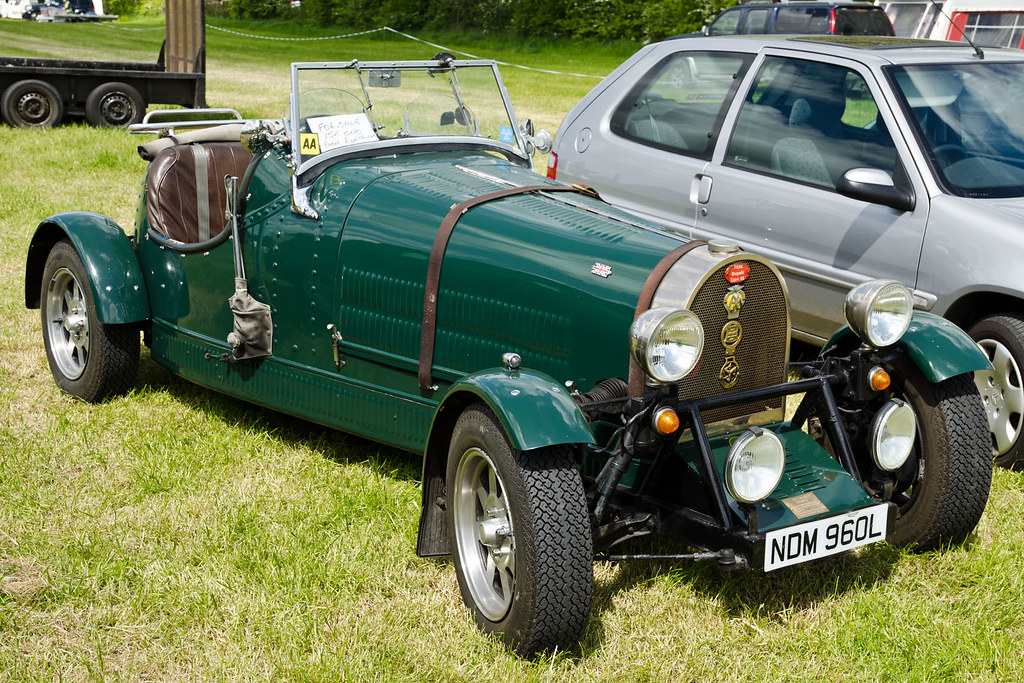
2. **Bugatti Type 35 Engine Blocks**
The distinctive straight-eight engine blocks from the legendary Bugatti Type 35 racing cars are veritable engineering masterpieces that emerged from the 1920s. Renowned for their incredible durability and revolutionary design, each block was machined to exacting standards, a testament to Bugatti’s relentless pursuit of perfection. These engines didn’t just power cars; they dominated Grand Prix racing across Europe, etching the Type 35’s name into the annals of motorsport history as a champion.
The historical significance of these engine blocks cannot be overstated. They are not merely components but the very heart of a machine that defined an era of racing prowess. When they occasionally surface at specialized auctions, these engine blocks now command staggering six-figure sums, reflecting both their rarity and their profound impact on automotive engineering and competitive sport. Their value is derived from their scarcity, their unparalleled craftsmanship, and their direct connection to a vehicle that was a titan on the race track.
For serious collectors and high-end restorers, acquiring an original Bugatti Type 35 engine block is a monumental achievement, crucial for maintaining the authenticity and monumental value of a Type 35. This component embodies the innovative spirit and mechanical artistry of Bugatti, making it a prized possession that represents a tangible link to a glorious past where engineering pushed the boundaries of speed and performance.
Car Model Information: 2024 Chevrolet Silverado 1500 Custom
Name: Bugatti Type 35
Manufacturer: Bugatti
Production: 1924–1930
Designer: Ettore Bugatti
BodyStyle: Underslung Type
Layout: Front-engine, rear-wheel-drive layout
Engine: unbulleted list
Transmission: Manual transmission
Length: cvt
Wheelbase: cvt
Width: cvt
Weight: cvt
Predecessor: Bugatti Type 30
Successor: Bugatti Type 51
Chassis: Steel ladder frame, aluminum body
Class: Grand Prix motor racing,Formula Libre
Assembly: Dorlisheim,Alsace
Categories: 24 Hours of Le Mans race cars, All articles needing additional references, Articles needing additional references from September 2025, Articles with short description, Bugatti automobiles
Summary: The Bugatti Type 35 is an iconic race car design produced by Bugatti at their Molsheim premises between 1924 and 1930. It was extremely successful when raced by the factory works team. It was also bought by a diverse roster of privateer clientele from around the world. It pioneered the concept of a holistically conceived, race-ready car available for purchase.
The arch/egg-shaped radiator is emblematic, as is the rear of the car. The tapered stern has been called a ‘Bordino tail’ and Ettore Bugatti may have been influenced by the shape of the earlier Fiat 804 driven and modified by Pietro Bordino. The car has also become synonymous with being the first to use cast alloy wheels.
The Type 35 was phenomenally successful, winning over 1,000 races in its time. It took the Grand Prix World Championship in 1926 after winning 351 races and setting 47 records in the two prior years. At its height the Type 35 averaged 14 race wins per week. Bugatti won the Targa Florio for five consecutive years, from 1925 through 1929, with the Type 35.
The Bugatti Type 35 was continually being modified and improved upon, but broadly falls into the following nomenclature:
Get more information about: Bugatti Type 35
Buying a high-performing used car >>>
Brand: Bugatti Model: Type 35
Price: $37,498 Mileage: 10,411 mi.

3. **Mercedes 300SL Gullwing Doors**
Perhaps one of the most visually striking and instantly recognizable features in automotive design, the iconic upward-opening doors that gave the Mercedes-Benz 300SL its ‘Gullwing’ nickname are far more than just an entryway; they are an engineering marvel. Their unique design adds dramatic flair and elegance, instantly elevating any 300SL to a centerpiece in any collection. These doors are highly valued for their innovation, aesthetic appeal, and the sheer audacity of their original concept.
Finding original Gullwing doors in good, restorable condition is an incredibly rare feat today. The complex hinges and unique frame structure, which were groundbreaking for their time, make these components particularly challenging to reproduce accurately without access to original factory specifications. This difficulty, coupled with the limited production of the 300SL, drives their value through the roof. Collectors are willing to pay a substantial premium for such exclusivity, recognizing the profound impact these doors have on the car’s overall authenticity and presentation.
Original doors, especially those in well-preserved condition, can sell for prices equivalent to a modest home in some areas, underscoring their status as both an automotive icon and a lucrative investment. The allure of these doors lies not only in their rarity and historical significance but also in their breathtaking visual drama, transforming the 300SL into an undeniable showstopper and a testament to mid-20th-century automotive genius. They are truly an embodiment of luxury and performance, captured in a single, magnificent design element.
Read more about: Beyond Nostalgia: 13 Legendary 1950s Cars Now Commanding Millions on the Collector Market

4. **Shelby Cobra Dashboard Instruments**
For any enthusiast of American muscle and racing history, the name Shelby Cobra evokes images of raw power and track dominance. Within these legendary machines, the original instrumentation from early Shelby Cobras has become incredibly scarce on the restoration market, despite constant searching by dedicated collectors. These were not generic gauges; they were specialized instruments manufactured in limited quantities and featured unique calibration tailored specifically for the high-performance applications that Carroll Shelby famously demanded for his vehicles.
The dashboard instruments are vital to the authenticity of a Shelby Cobra, reflecting the precision and performance focus inherent in Shelby’s vision. A complete, authentic instrument cluster, when found in preserved condition, might command prices as high as that of a brand-new family car. This staggering value is a direct result of their scarcity, their specific design, and their intimate connection to one of the most revered names in motorsport.
Restorers and collectors meticulously seek out these gauges not just for their functional purpose, but for the historical accuracy and the story they tell. They represent the cockpit of a racing legend, offering a tangible link to the thrilling era of the Cobra’s reign. The unique calibrations and limited production batches make these dashboard instruments exceptionally difficult to source, cementing their status as highly desirable and valuable automotive components.
Read more about: Beyond the Badges: 10 Revolutionary 1960s Sports Cars Only True Collectors Will Recognize

5. **Jaguar D-Type Windscreens**
The Jaguar D-Type, a car built for speed and elegance, featured aircraft-inspired windscreens that combined elegant curves with aerodynamic function and profound historical significance. These specially formed acrylic pieces were truly ahead of their time when they appeared on the racing scene in the 1950s, embodying Jaguar’s innovative approach to design and performance. The D-Type itself is an icon of endurance racing, and its windscreen is a crucial element of its distinctive profile.
Finding an undamaged original D-Type windscreen today is nearly an impossible task. Their unique composition and the demands of racing meant many were damaged or replaced over the decades, making intact originals exceedingly rare. Prices for these transparent treasures can reach well into five figures, reflecting not only their extreme scarcity but also their critical role in defining the D-Type’s legendary aerodynamics and aesthetic.
For a car that clinched multiple victories at Le Mans, every component tells a story of speed, engineering, and daring. The windscreen, in particular, offers a clear (pun intended) view into the technological advancements and design philosophy of its era. Its delicate yet functionally critical nature, combined with its historical provenance, positions it as a highly prized item for anyone undertaking a genuine D-Type restoration, making it an invaluable piece of automotive heritage.
Car Model Information: 2017 Jaguar F-PACE 20d Prestige
Caption: Retromobile
Name: Jaguar D-Type
Designer: Malcolm Sayer
Manufacturer: Jaguar Cars
Production: 1954–1957
Assembly: Coventry
Class: Sports racing car
BodyStyle: Roadster (automobile)
Layout: Front-engine, rear-wheel-drive layout
Engine: cvt,Jaguar XK6 engine
Predecessor: Jaguar C-Type
Successor: Jaguar E-Type#Lightweight E-Type (1963–64, 2014–present)
Related: Jaguar XKSS
Categories: 24 Hours of Le Mans race cars, All Wikipedia articles written in British English, All articles needing additional references, All articles with unsourced statements, Articles needing additional references from April 2010
Summary: The Jaguar D-Type is a sports racing car that was produced by Jaguar Cars Ltd. between 1954 and 1957. Designed specifically to win the Le Mans 24-hour race, it shared the straight-6 XK engine and many mechanical components with its C-Type predecessor. Its structure, however, was radically different, with innovative monocoque construction and slippery aerodynamics that integrated aviation technology, including in some examples a distinctive vertical stabilizer.
Engine displacement began at 3.4 litres, was enlarged to 3.8 L in 1957, and reduced to 3.0 L in 1958 when Le Mans rules limited engines for sports racing cars to that maximum. D-Types won Le Mans in 1955, 1956 and 1957. After Jaguar temporarily retired from racing as a factory team, the company offered the remaining unfinished D-Types as street-legal XKSS versions, whose perfunctory road-going equipment made them eligible for production sports car races in America. In 1957 25 of these cars were in various stages of completion when a factory fire destroyed nine of them.
Total production is thought by some to have totaled 71 D-Types, including 18 for factory teams and 53 for privateers (plus an additional 16 D-Types were converted into road-legal XKSS versions). Jaguar is quoted as claiming it built 75 D-Types.
Get more information about: Jaguar D-Type
Buying a high-performing used car >>>
Brand: Jaguar Model: D-Type
Price: $15,990 Mileage: 78,266 mi.

6. **Porsche 356 Speedster Seats**
The lightweight bucket seats specifically designed for the Porsche 356 Speedster have evolved into collector items in their own right, highly sought after among Porsche enthusiasts worldwide. Their distinctive shape and unique mounting system were not generic; they were specific to these rare and iconic convertibles from Stuttgart, embodying the minimalist, performance-oriented ethos of the Speedster. The Porsche 356, as a whole, is cherished for its craftsmanship and historical significance, and these seats are a fundamental part of that legacy.
Original Speedster seats, especially those with the correct materials and construction details, can sell for prices comparable to a modern Porsche’s Manufacturer’s Suggested Retail Price (MSRP). This extraordinary value underscores their scarcity and their importance in maintaining the authentic character of a 356 Speedster. Collectors hunt for these seats not just for comfort, but for the authenticity they bring to a vintage Porsche, understanding that even the interior components play a crucial role in the car’s overall appeal and market value.
The rarity and condition of these seats play a critical role in their market price, making them a high-value asset for any Speedster owner or restorer. They are more than just seating; they are a tangible link to the driving purity and aesthetic charm of an era that defined Porsche’s early success, enhancing both the aesthetic and monetary value of a genuine 356 Speedster.
Car Model Information: 2024 Chevrolet Silverado 1500 Custom
Name: Porsche 356
Manufacturer: unbulleted list
Production: 1948–1965
Assembly: Gmünd, Carinthia
Successor: Porsche 911 (classic)
Caption: Porsche 356 C coupé
Class: Sports car
Related: unbulleted list
Layout: Rear-engine, rear-wheel-drive layout
BodyStyle: unbulleted list
Designer: Ferry Porsche,Erwin Komenda
Wheelbase: 82.7 in
Abbr: on
Order: flip
Length: convert
Width: 65.4 in
Height: convert
Weight: convert
Categories: 1950s cars, 1960s cars, 24 Hours of Le Mans race cars, All Wikipedia articles written in American English, All articles containing potentially dated statements
Summary: The Porsche 356 is a rear-engine sports car, and the first-ever production Porsche model.
The 356 is a lightweight and nimble-handling, rear-engine, rear-wheel drive, two-door available both in hardtop coupé and open configurations. Engineering innovations continued during the years of manufacture, contributing to its motorsports success and popularity. Production started in 1948 at Gmünd, Austria, where Porsche built approximately 50 cars. In 1950 the factory relocated to Zuffenhausen, Germany, and general production of the 356 continued until April 1965, well after the replacement model 911 made its September 1964 debut. Of the 76,000 originally produced, approximately half survive. The 356 was first produced by Austrian company Porsche Konstruktionen GesmbH (1948–1949), and then by German company Dr. Ing. h. c. F. Porsche GmbH (1950–1965). It was Porsche’s first production automobile. Earlier cars designed by the Austrian company include Cisitalia Grand Prix race car, the Volkswagen Beetle, and Auto Union Grand Prix cars.
The original price in 1948 for the 356 coupe was US$3,750 (equivalent to $49,100 in 2024) (official general USD inflation). The 356 cabriolet cost US$4,250 (equivalent to $55,600 in 2024).
Get more information about: Porsche 356
Buying a high-performing used car >>>
Brand: Porsche Model: 356 Speedster
Price: $37,498 Mileage: 10,411 mi.
Read more about: Unleashing Performance, Ensuring Protection: 12 Sports Cars Where Speed Meets Stellar Safety Ratings

7. **Aston Martin DB5 Headlight Assemblies**
The Aston Martin DB5, forever immortalized by its cinematic provenance in the James Bond series, is a symbol of British elegance and sophisticated engineering. Among its distinctive features, the covered headlight assemblies are engineering works of art. These mechanisms, which control the opening and closing action of the covers, involve precision components that are no longer manufactured anywhere worldwide, making them incredibly unique and difficult to replace.
Complete original units of these headlight assemblies can command prices approaching $20,000 when they rarely appear on the market. This staggering figure is a direct reflection of their extreme scarcity, the complexity of their design, and their undeniable connection to a legendary vehicle that holds a special place in popular culture. For an Aston Martin DB5, these headlights are not merely functional; they are a defining aesthetic and mechanical signature, central to its iconic status.
Collectors value these assemblies not only for their intricate craftsmanship but for the authenticity and desirability they add to a DB5 restoration. Owning such a piece is akin to holding a fragment of motoring and cinematic history, making it an invaluable component for anyone seeking to preserve the legacy of this iconic British grand tourer. The blend of mechanical ingenuity, aesthetic grace, and global recognition makes these headlight assemblies a truly prized possession for the ultimate Aston Martin enthusiast.
Moving deeper into the realm of automotive legends, our journey through the most coveted and valuable classic car parts continues. The pieces we’re about to explore are not just scarce; they are pinnacles of design, engineering, and historical narrative, each telling a compelling story of an era when automobiles were as much art as they were machines. These components embody the spirit of innovation and luxury, fetching truly eye-watering prices that affirm their status as automotive unobtanium. Get ready to discover more treasures that elevate a classic vehicle from merely old to undeniably priceless.
Car Model Information: 2024 Chevrolet Silverado 1500 Custom
Name: Aston Martin DB5
Manufacturer: Aston Martin
Production: 1963–1965 (1,059 units),2020 (25 units)
Assembly: Newport Pagnell,England
Designer: Carrozzeria Touring Superleggera
Class: Grand tourer
BodyStyle: coupé
Layout: Front-engine, rear-wheel-drive layout
Engine: DOHC,Straight-6,3995 cc
Order: flip
Abbr: on
Powerout: convert
Transmission: ZF Friedrichshafen
Length: 4570 mm
Width: 1680 mm
Wheelbase: 98.0 in
Predecessor: Aston Martin DB4
Successor: Aston Martin DB6
Doors: 2
Weight: 3311 lb
Sp: uk
Categories: All Wikipedia articles written in British English, Articles with short description, Aston Martin vehicles, CS1: unfit URL, Cars discontinued in 1965
Summary: The Aston Martin DB5 is a British grand tourer (GT) produced by Aston Martin and designed by Italian coachbuilder Carrozzeria Touring Superleggera. Originally produced from 1963 to 1965, the DB5 was an evolution of the final series of DB4. The “DB” designation is from the initials of David Brown who built up the company from 1947 onwards.
The DB5 is best-known for its role in the James Bond films. It was first driven by the fictional spy in the film Goldfinger (1964). In 2013, the car featured on a “British Auto Legends” postage stamp issued by the Royal Mail.
Get more information about: Aston Martin DB5
Buying a high-performing used car >>>
Brand: Aston Martin Model: DB5
Price: $37,498 Mileage: 10,411 mi.
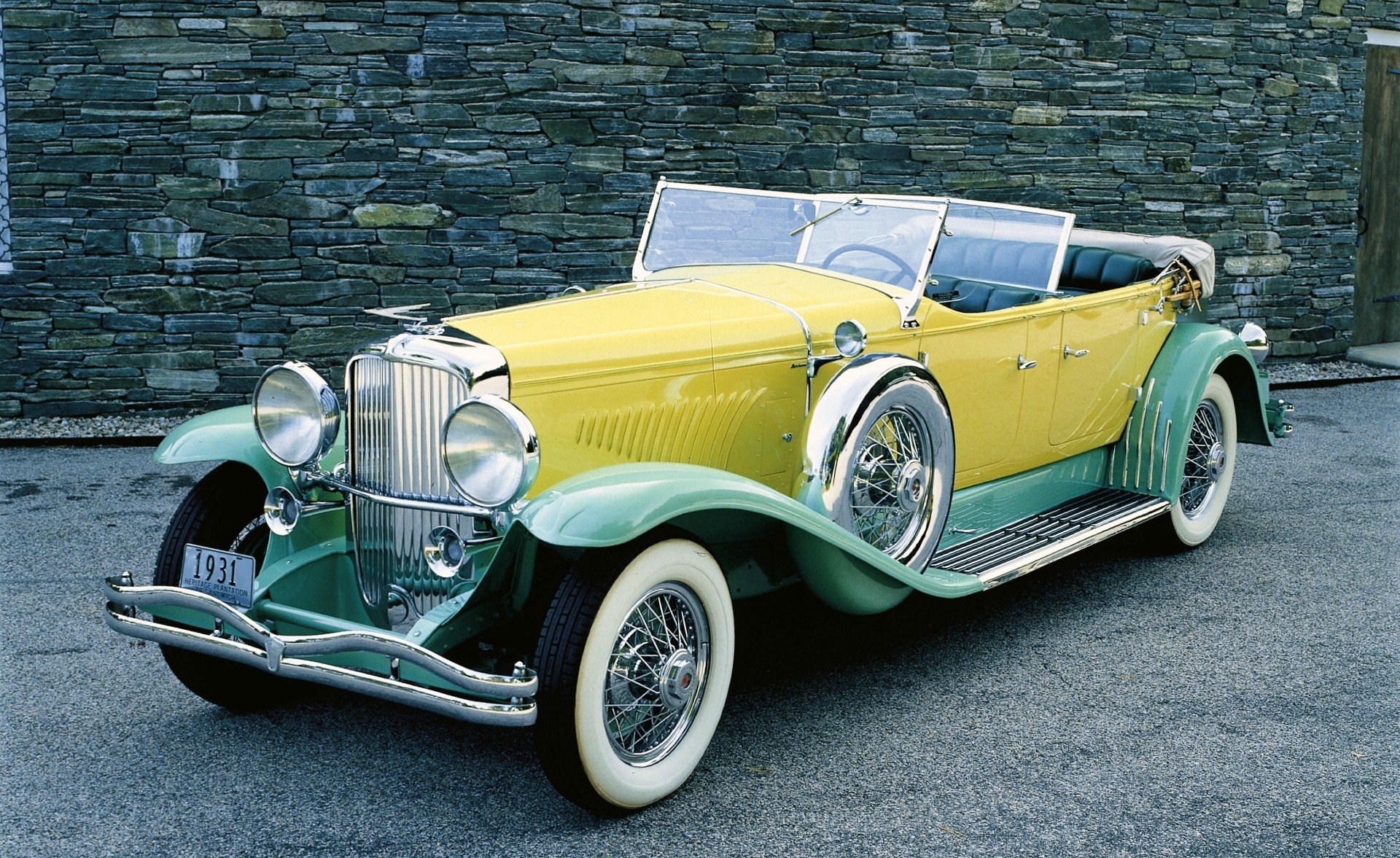
8. **Duesenberg Model J Bumpers**
The majestic Duesenberg Model J’s chrome bumpers transcend mere protection, standing as sculptural testaments to unparalleled craftsmanship. Manufactured to exacting standards, these intricate pieces feature complex curves and mounting brackets unique to these grand American luxury cars. They embody the material quality and bespoke design that defined Duesenberg’s golden era, a benchmark modern reproductions struggle to replicate.
Duesenbergs, favored by royalty and stars, symbolized the pinnacle of American luxury and engineering. Their bumpers were crucial to this imposing image, meticulously integrated into the car’s sweeping lines. This level of precise design, revolutionary for its time, reflects an unwavering pursuit of perfection, contributing significantly to their enduring allure and historical value.
Finding an original, untarnished Duesenberg Model J bumper is exceptionally rare and highly sought after today. When an authentic assembly surfaces, its price tag is astronomical, often surpassing the value of many complete vintage cars. This scarcity, combined with its historical weight, underscores its pivotal role in preserving a Duesenberg’s authenticity and monumental market worth.
Car Model Information: 2024 Chevrolet Silverado 1500 Custom
Name: Sfn
Caption: 1930 Duesenberg J Murphy Torpedo Convertible
Manufacturer: Duesenberg
Aka: Duesenberg J,Duesenberg SJ (supercharged),Duesenberg SSJ (short-wheelbase supercharged)
Production: 1928–1937,481 produced (445 Model J, 36 Model SJ)
Assembly: Indianapolis,Indiana,United States
Designer: Gordon Buehrig
Class: Luxury vehicle
BodyStyle: Coachbuilt to owner’s preference
Layout: Front-engine, rear-wheel-drive layout#Front mid-engine, rear-wheel-drive layout
Engine: 420 cuin
Abbr: on
Disp: Sfn
Transmission: Manual transmission
Wheelbase: {{convert,142.5,in,mm,1,abbr=on,disp=flip
Predecessor: Duesenberg Model A
Sp: us
Categories: 1930s cars, All articles with unsourced statements, Articles with short description, Articles with unsourced statements from December 2013, Articles with unsourced statements from June 2012
Summary: The Duesenberg Model J is a luxury automobile made by Duesenberg exclusively in 1928 and offered for ten subsequent years. Intended to compete with the most luxurious and powerful cars in the world, it was introduced in 1928, the year before the stock market crash that led to the Great Depression. Duesenberg Motors Company went bankrupt in 1937.
Get more information about: Duesenberg Model J
Buying a high-performing used car >>>
Brand: Duesenberg Model: Model J
Price: $37,498 Mileage: 10,411 mi.
Read more about: Bringing Back Legends: 15 Iconic ’60s Cars That Truly Deserve a Modern Comeback
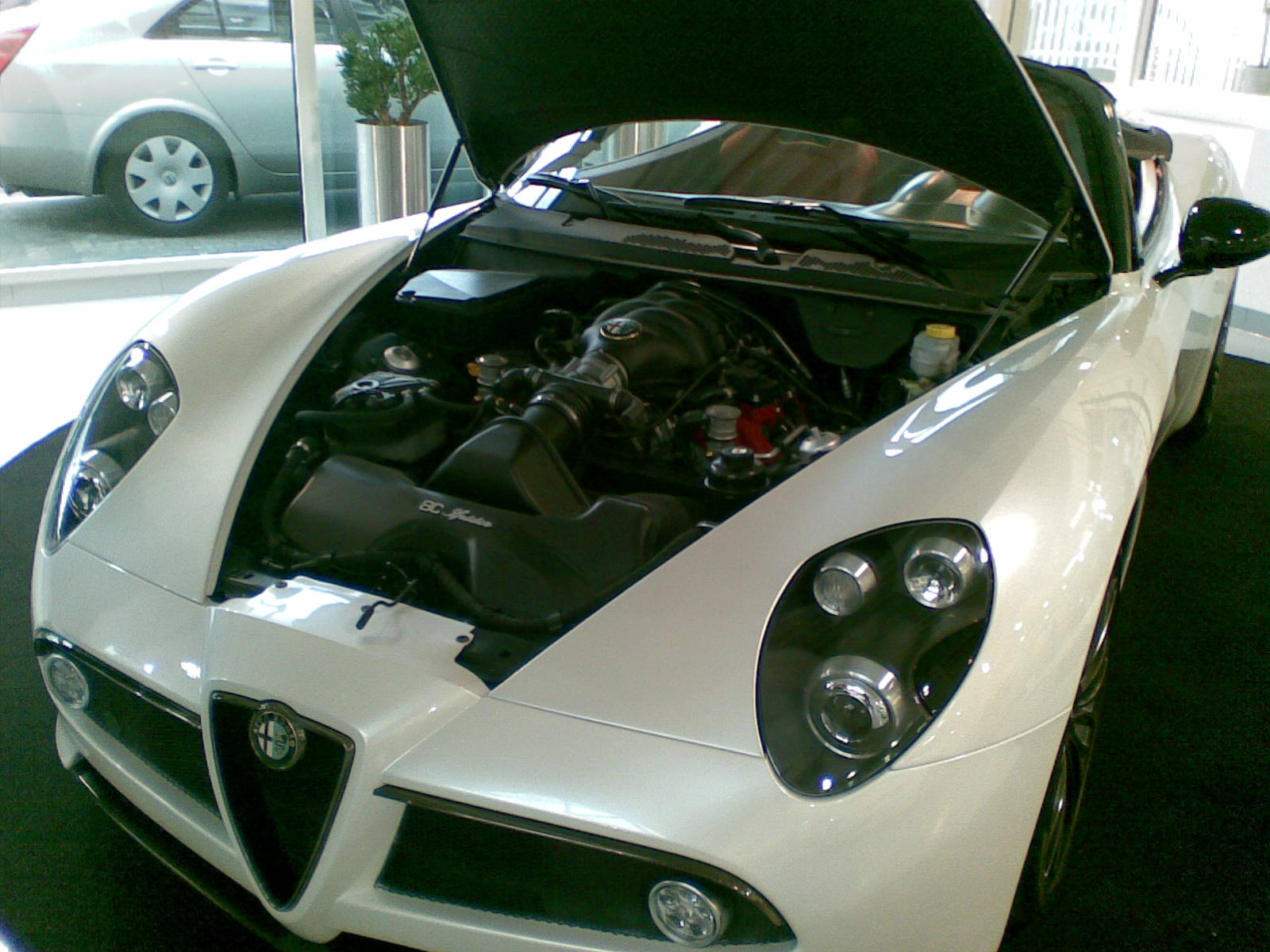
9. **Alfa Romeo 8C Cylinder Heads**
At the core of Alfa Romeo’s 1930s racing legacy lie the complex aluminum cylinder heads of the legendary 8C engines. These engineering masterpieces boast intricate cooling passages and revolutionary valve arrangements, setting new standards for automotive design. This sophisticated engineering was pivotal in forging Alfa Romeo’s formidable reputation on European race tracks.
The 8C engine’s design was truly groundbreaking, directly propelling Alfa’s racing dominance, including multiple victories at prestigious events like the Mille Miglia. These cylinder heads showcased advanced metallurgy and fluid dynamics, pushing performance boundaries of the era. Their innovative construction provided superior thermal management and breathing, delivering consistent power and reliability.
Securing an original Alfa Romeo 8C cylinder head in restorable condition is an extraordinary feat for collectors. Their high-performance application often led to stress and damage, making intact originals exceptionally rare. When available, these heads can command prices equivalent to a new sports car, underscoring their profound significance in racing history and extreme scarcity.
Car Model Information: 2024 Chevrolet Silverado 1500 Custom
Caption: Custom Alfa Romeo 8C (1936)
Name: Alfa Romeo 8C
Manufacturer: Alfa Romeo
Production: 1931–1939
Assembly: Portello (district of Milan)
Class: Luxury car,Sports car,Racing car
Layout: FR layout
Engine: Straight-8
Designer: Vittorio Jano
Categories: 24 Hours of Le Mans race cars, Alfa Romeo sports racing cars, Alfa Romeo vehicles, Articles with short description, Cars introduced in 1931
Summary: The Alfa Romeo 8C was a range of Alfa Romeo road, race and sports cars of the 1930s.
The 8C designates 8 cylinders, and originally a straight 8-cylinder engine. The Vittorio Jano designed 8C was Alfa Romeo’s primary racing engine from its introduction in 1931 to its retirement in 1939. In addition to the two-seater sports cars it was used in the world’s first genuine single-seat Grand Prix racing car, the Monoposto ‘Tipo B’ – P3 from 1932 onwards. In its later development it powered such vehicles as the twin-engined 1935 6.3-litre Bimotore, the 1935 3.8-litre Monoposto 8C 35 Type C, and the Alfa Romeo 8C 2900B Mille Miglia Roadster. It also powered top-of-the-range coach-built production models, including a Touring Spider and Touring Berlinetta.
In 2004 Alfa Romeo revived the 8C name for a V8-engined concept car. This eventually made it into production in 2007, as the 8C Competizione.
Get more information about: Alfa Romeo 8C
Buying a high-performing used car >>>
Brand: Alfa Romeo Model: 8C
Price: $37,498 Mileage: 10,411 mi.
Read more about: High-Performance Thrills, Sensible Spends: 15 Cars That Rival the Porsche 911 Without the Hefty Price Tag
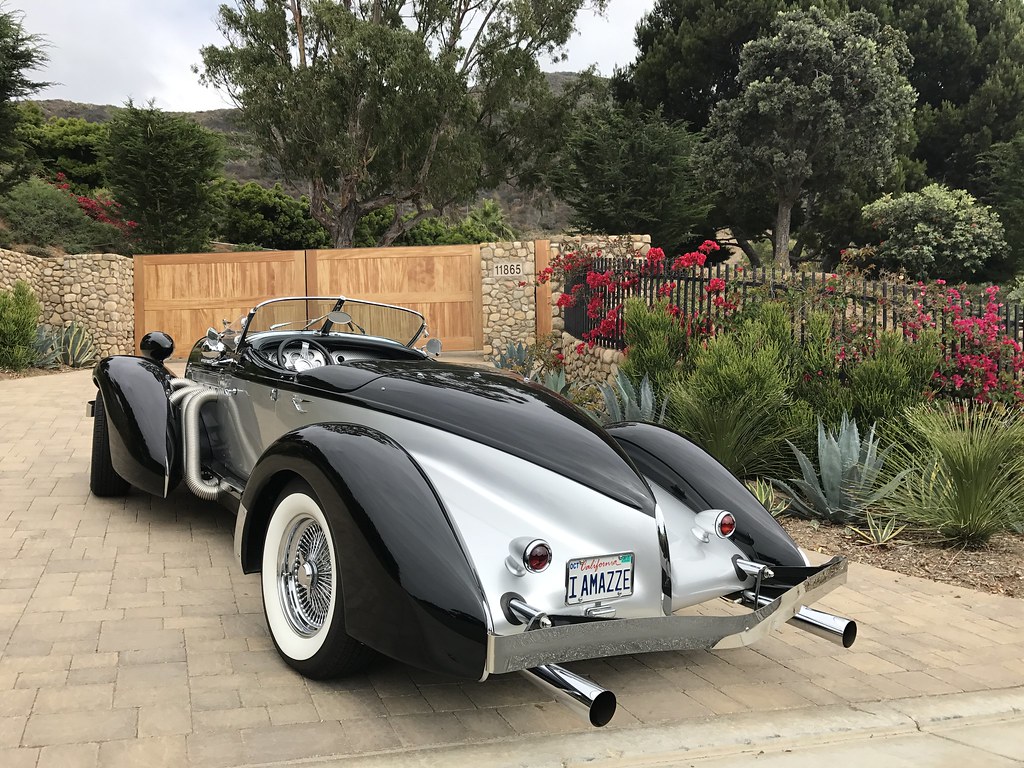
10. **Auburn Boattail Speedster Taillights**
The Auburn Boattail Speedster is iconic for its distinctive lines, and its art deco taillights are key to that allure. More than mere lights, these elegantly shaped brass and glass components perfectly complemented the car’s dramatic, aircraft-inspired aesthetic. They embody the bold design and glamour of pre-war American automotive artistry.
Produced in very limited quantities during the challenging Depression era, these taillights possess extreme rarity. Their unique design was fundamental to the Speedster’s appeal, making it a standout vehicle in a difficult period. The craftsmanship, blending durable brass with carefully shaped glass, reflects the era’s commitment to quality and unique style.
Finding authentic pairs of Auburn Boattail Speedster taillights is a true treasure hunt today. Many were damaged or replaced, rendering intact originals exceptionally scarce. When they do surface, these historically significant components can sell for over $15,000, confirming their irreplaceable role in completing the Boattail Speedster’s iconic silhouette.
Car Model Information: 2024 Chevrolet Silverado 1500 Custom
Name: Auburn Speedster
Caption: 1935 Auburn Boattail Speedster 851
Manufacturer: Auburn Automobile
Assembly: Auburn, Indiana,Union City, Indiana
Production: 1925–1937
Designer: Gordon Buehrig
BodyStyle: Roadster (automobile)
Engine: Lycoming Engines
Transmission: Three speed manual with synchromesh on second and third ratios in ‘high’
Length: convert
Width: convert
Weight: convert
Categories: All articles needing additional references, All articles with unsourced statements, Articles needing additional references from August 2012, Articles needing additional references from December 2020, Articles with short description
Summary: The Auburn Speedster is an American car, manufactured by the Auburn Automobile Company of Auburn, Indiana and manufactured in Union City, Indiana. A total of 887 cars were manufactured between 1928 and 1936, across 3 series (1928-1930 with “eight” and “big eight” engines, 8 cylinder 1931-1933, 12 cylinder 1932-1934, and the dramatic, iconic 1935-36 Supercharged 8). The first two series were designed by stylist Alan Leamy. The Auburn 851 Speedster of 1935 was styled by designer Gordon Buehrig, who also was responsible for the Cord Model 810. Al Jenkins broke 70 American speed records in the 1935 car.
Get more information about: Auburn Speedster
Buying a high-performing used car >>>
Brand: Auburn Model: Boattail Speedster
Price: $37,498 Mileage: 10,411 mi.
Read more about: Sculpted for the Ages: MotorTrend’s Definitive Look at the Most Visually Arresting Cars from Every Iconic Marque

11. **Packard Twelve Hood Ornaments**
Adorning the magnificent grilles of Packard’s prestigious Twelve models were the graceful ‘Goddess of Speed’ hood ornaments. These are not just decorations but miniature sculptural masterpieces of undeniable elegance. Crafted from high-quality materials with exceptional detail by master artisans, each ‘Goddess’ symbolized Packard’s commitment to luxury, speed, and sophisticated design.
In an era where hood ornaments were prestige symbols, the Packard ‘Goddess of Speed’ was a standout. Its flowing form, often mid-stride, captured the essence of motion and the aspirations of its discerning owners. The intricate casting and finishing work showcased the skilled handcraftsmanship that defined luxury automobiles of that period.
Original examples of these mascots, especially with intact mounting hardware and proper patina, are now exceedingly rare and highly sought after. They offer a tangible link to a bygone era of unparalleled automotive excellence. Routinely selling for over $10,000 at specialized auctions, these ornaments are cherished for their beauty, historical narrative, and the immediate prestige they confer.
Read more about: Beyond the Boomer Icons: Why Millennials Are Steering Clear of These Classic Cars and Reshaping the Collector Market

12. **Tucker 48 Center Headlight**
Preston Tucker’s revolutionary sedan, the Tucker 48, featured an innovative center-mounted ‘Cyclops’ headlight, its most distinctive element. This forward-thinking component represents pure automotive unobtanium for dedicated collectors. It was a bold statement in both design and safety, challenging conventional norms and embodying Tucker’s vision to redefine the automobile.
The Tucker 48’s history is unique, with only 51 cars ever produced, making original components extraordinarily scarce. The ‘Cyclops’ was more than style; it turned with the steering wheel, illuminating the direction of travel – a safety feature decades ahead of its time. This ingenious mechanism exemplified Tucker’s commitment to innovation despite immense corporate pressure.
Today, a complete headlight assembly for a Tucker 48, with its distinctive turning mechanism, is a paramount holy grail for preservationists. Its extreme rarity, historical significance, and innovative engineering propel its value skyward. When available, it can fetch prices exceeding $30,000, solidifying its place as one of automotive history’s most valuable single components.
Read more about: Gone But Not Forgotten: Tracing the Legacy of 14 Iconic American Car Brands That Vanished from Dealerships

13. **Cord 810/812 Transmission**
While admired for their radical styling, the Cord 810 and 812 models housed a more groundbreaking innovation: a front-wheel-drive transmission. Decades ahead of its time in the 1930s, this complex assembly epitomized pioneering engineering solutions. It established these cars as true automotive trailblazers, introducing an unprecedented drivetrain arrangement.
This front-wheel-drive system enabled the Cord’s strikingly low profile, eliminating the need for a bulky drive shaft tunnel. This not only freed up interior space but contributed to its iconic ‘coffin nose’ design. The immense engineering challenges involved required ingenious solutions for power transfer and suspension, showcasing an extraordinary vision for automotive architecture.
A complete, rebuildable original transmission for a Cord 810/812 is incredibly difficult to source today. Due to its complexity and bespoke nature, authentic units are indispensable for proper restoration, as replication is challenging. Such a component might cost more than an entire modern luxury vehicle, highlighting its monumental historical importance and extreme scarcity.
Read more about: Gone But Not Forgotten: Tracing the Legacy of 14 Iconic American Car Brands That Vanished from Dealerships
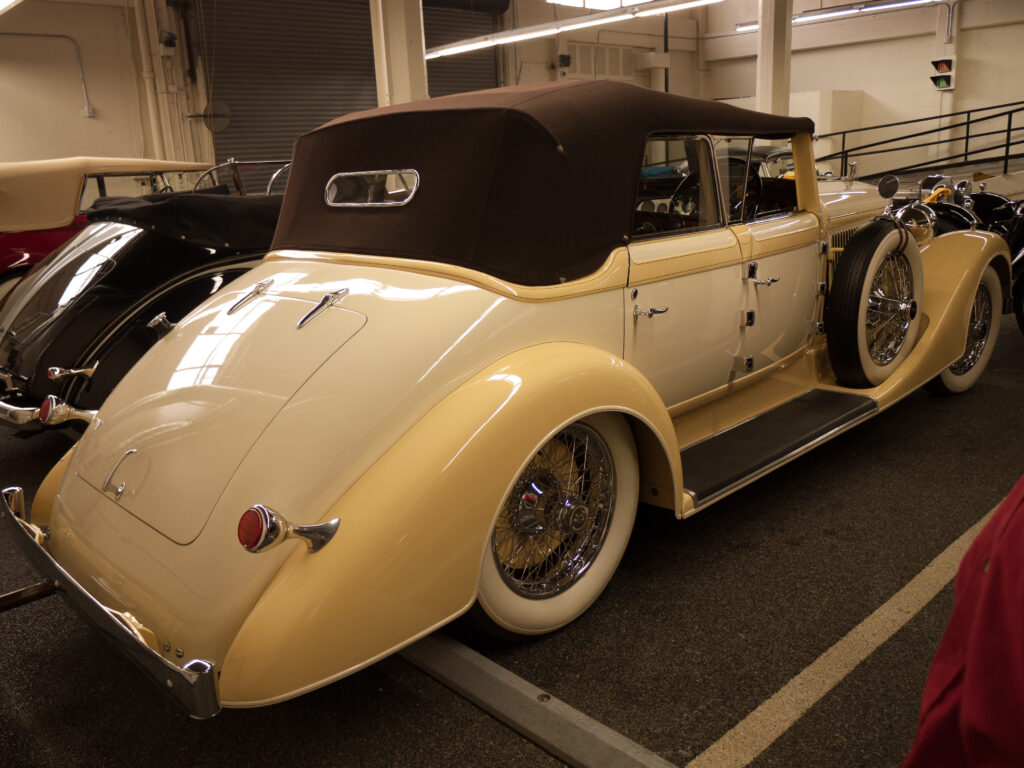
14. **Hispano-Suiza H6 Radiator Mascots**
Adorning Hispano-Suiza’s prestigious H6 models were the magnificent stork mascots, miniature sculptures of remarkable detail and aristocratic heritage. These emblems were more than mere brand identifiers; they deeply symbolized the French flying squadron that used a stork during World War I. This patriotic significance seamlessly blended with the marque’s luxury and engineering excellence.
The Hispano-Suiza stork mascot, often in bronze or silver, was a masterpiece of artisanal metalwork. It reflected the same precision and elegance found in the cars themselves, linking the advanced engineering of Hispano-Suiza aircraft engines to their luxury automobiles. The mascot became a potent symbol of speed, grace, and national pride, embodying a dual legacy.
Authentic examples of these iconic mascots, with proper markings and aged patina, are now exceedingly rare and intensely desired. Their unique story, exquisite craftsmanship, and connection to a legendary marque make them highly valuable. Regularly commanding prices exceeding $20,000 at high-end auctions, these mascots are cherished as both historical artifacts and stunning pieces of automotive art.
As our exhilarating exploration concludes, it’s abundantly clear that these rare car parts are far more than mere components. Each piece—from a Duesenberg bumper to a Hispano-Suiza stork mascot—is a tangible link to a golden era of automotive ingenuity, daring design, and unparalleled craftsmanship. They encapsulate stories of innovation, triumph, and the relentless pursuit of perfection that defined motoring pioneers. For enthusiasts, collectors, and restorers, these treasures aren’t just investments; they are profound connections to history, ensuring the legacy of these magnificent machines continues to inspire awe and ignite passion for generations to come. The hunt for such automotive gold is a testament to the enduring power and beauty of the classic car world.

